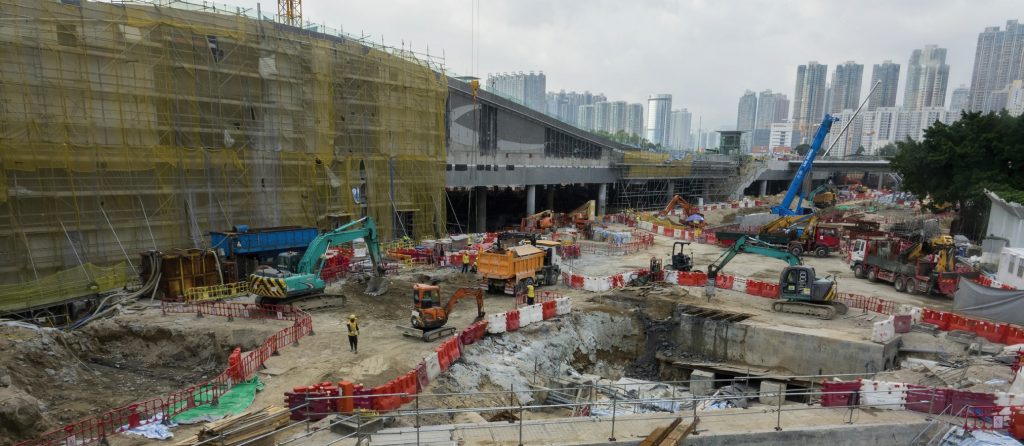In 2018, all consultants and contractors undertaking the design and construction of government works projects will be required to use building information modelling (BIM) technology.
After years of progressive adoption by major players, it seems BIM is finally set to become the mandated method of collaboration in the construction industry. Yet can the industry go one step further and embrace digital engineering, in order to deliver better design and improve construction processes?
Major consultants who have embraced digital engineering all agree that BIM is only one element of a more holistic approach towards project execution.
“A lot happens during the design and construction process before a BIM model can be delivered,” explained Arup’s digital design and service leader Ramon van der Heijden. “BIM is used further down the line; digital engineering is a process that you use from the start of a project until the project is delivered. The core business of Arup is not building the BIM model but designing and engineering everything that ends up in the BIM model; that’s digital engineering.”
But why go digital when the industry is more familiar with traditional ways of work, which serve its purpose? The answer is obvious: Digital technology is transforming nearly all industries, and if companies and businesses fail to catch up, they are at risk of being outcompeted in the near future. Going digital opens up more innovative approaches to project delivery amid the increasing size and complexity of projects.
DIGITAL BENEFITS
Laing O’Rourke demonstrated the benefits of digital engineering when the contractor tackled three railway projects in joint ventures with local partners. The British contractor secured the three large-scale complex contracts, all of which involved substantial excavation.
According to Laing O’Rourke’s digital engineering leader John Myhill, the firm applied digital techniques from the initial site investigations onwards. The initial model was compared with a second surface model that was created as the rock head was revealed during excavation, thus giving the construction team a better picture of the conditions and facilitating risk management. This approach was applied to other aspects of the three projects to enhance the designs and reduce waste. Gammon Construction Hong Kong Ltd, another forward-thinking contractor, similarly used digital techniques to improve the project-delivery process, using laser scanning to capture the topography of a contract site, which takes minutes rather than days and provides much more accurate information to help the contractor identify clashes and explore buildability.
Engineering consultancy Mott MacDonald used automation to design 860 piles for Singapore’s sixth incineration plant in two weeks. “We created an innovative automated design process to connect the documentation model, analysis model and pile design spreadsheet,” said Sean Kearney, Mott MacDonald’s North East Asia strategic BIM consultancy leader.
“This enabled us to design all the piles within the deadline but also perform a risk analysis, looking at the cost implication of variable loading or ground conditions. An impressive automation example from the UK has allowed a pumping station design process to be reduced from 15 days to 15 minutes!”

NEW TOOLS
New tools, such as cloud computing and virtual reality, have made the application of digital engineering even more effective.
“The use of the cloud allows us to seamlessly collaborate on projects on a global basis,” said Atkins director George Ramsbottom. “Utilising the power of cloud computing, we will be able to employ generative design, that can cycle through thousands—or even millions—of design choices, test different configurations and learn from each iteration what works and what doesn’t. This process can enable our designers to generate brand new options, beyond what a human alone could create, to arrive at the most effective design.”
BIM is an important element of digital engineering because it facilitates both collaboration and communication.
THE HONG KONG INSTITUTION OF ENGINEERS (HKIE)
Incorporated under the Hong Kong Institution of Engineers Ordinance, Chapter 1105 of the Laws of Hong Kong in 1975, the HKIE aims to bring together engineers of different disciplines for their common good. The Institution sets standards for the training and admission of engineers, governs the conduct of its members and enables its members to keep abreast of the latest developments in engineering.
The HKIE has established close relationship with engineering institutions throughout the world and has signed agreements for reciprocal recognition of professional qualifications and agreements of co-operation with engineering authorities and other organisations worldwide.

 Malaysia
Malaysia Singapore
Singapore Indonesia
Indonesia Tiếng Việt
Tiếng Việt ประเทศไทย
ประเทศไทย










